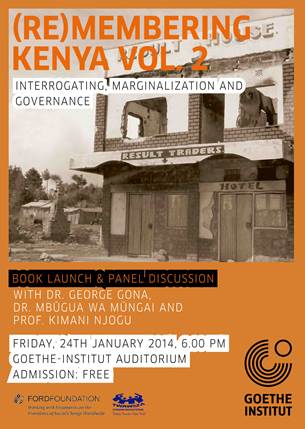By Karama Ogova
Published December 28, 2010
 From the outward appearance of Street of Crocodiles: Photography, Media and Postsocialist Landscapes in Poland by Kamil Turowski (photographs), J Hoberman (introduction) and Katarzyna Marciniak (essays) , the reader can tell it is an expensively manufactured 176-page paperback targeting library keepers and book collectors. Additionally, the illustration on the cover suggests this is the type of book that would be of specific interest to photographers interested in historical and developmental advancement subjects.
From the outward appearance of Street of Crocodiles: Photography, Media and Postsocialist Landscapes in Poland by Kamil Turowski (photographs), J Hoberman (introduction) and Katarzyna Marciniak (essays) , the reader can tell it is an expensively manufactured 176-page paperback targeting library keepers and book collectors. Additionally, the illustration on the cover suggests this is the type of book that would be of specific interest to photographers interested in historical and developmental advancement subjects.
The title”Streets of Crocodiles” may not make sense to anyone without an inkling of what this metaphor means. It is only when one starts reading it that one comes to know that it has been borrowed from a Polish-Jewish writer (Bruno Schulz)’s 1934 short story and that the title has a hidden meaning in reference to the content of the book that gives the reader the idea that it just may revolve around street stories.
But judging books by their covers could be quite misleading. Streets of Crocodiles deals with the subjects the human mind may not easily understand, let alone accept: ethnic tensions, xenophobia, racism, sexism and aggressive rhetoric of hate that flourishes against the brisk political and cultural progress in the European Union.
RELATED: How Green Spaces Can Prevent Urban Centres from Turning into Concrete Jungles
Unlike the Bruno Schulz’s The Streets of Crocodiles short story of 1934 that is set in the East European provinces characterised by -pseudo-Americanism, grafted on the old, crumbling core of the city […] in a rich but empty and colourless vegetation of pretentious vulgarity […]cheap jerry-built houses with facades covered with a monstrous stucco of cracked plaster, –Kamil Turowski’s Streets of Crocodiles photography shot over a 20-year period and published in November 2010 applies Schulz’s metaphor to the 21st century New European–hood: the post-socialist, hybridized terrain where the democratic colours of western consumer ism clash with the monochromatic anachronisms of the old socialist reality…beyond the most visible commercial smoke-and-mirrors facade of colourful supersized banners and murals popping up on the grounds of the old socialist black-and-white El Dorado, there are some socially deeply rooted underlying constants…grotesquely scarred urban textures persistently roughed up by the vile bites of the seemingly prehistoric crocodilian deep structures: xenophobia and anti-Semitism.
The “Nazi Germans may have created Auschwitz and many other death camps to carry out their diabolical plan to exterminate Jews, Gypsies, Slavs, homosexuals, and others deemed by them to be of ‘inferior race’ “, writes Katarzyna Marciniak before proceeding to question why Nazi words and images:crematoriums, gas chambers, execution walls, gallows, death survive on wall graffiti in Lodz 60 years after World War II.
Turowski, whose photographs are mostly taken in Lodz, says the racist graffiti has resisted the economic and political changes and that it is a phenomenon that is ignored by residents and authorities alike. Marciniak observes that this may be a no-go-zone as there are hardly any publications tackling the visual insults. Is it any surprise, Marciniak appears to be asking, that only several hundred Jews live in Lodz ‘the second largest city in Poland whose Jewish population was the second largest in Europe’ with a tiny synagogue and one of the largest Jewish cemeteries in Europe?
The blurbs on the outside book cover provide ample information on the two authors, Kamil Turowski and Katarzyna Marciniak giving in detail the occupational positions and posts they currently hold or held at the time of publishing. Information on these authors points to the idea that they are experts in the book writing industry.
Dr Imogen Taylor describes Streets of Crocodiles that is yet to be released and whose paperback copy sells at £32.50 as “an exceptionally powerful document of the transformations of post-Berlin-wall Eastern Europe and an exposé of the persistent anti-Semitism and other deep-seated hatreds.”
To me, it is an invaluable publication that shows the relationship and transition between the new and old Europe. It gives a combination of diverse thoughts and insights into all major events and appropriate facts from involved parties as well as residents of Poland, leaving the decisive conclusion to the reader’s discretion.
RELATED: Seychelles Publishes Souvenir Book on the 2011 Seychelles Carnaval International de Victoria
Though a large part of the book consists of colour photos, there are also black-and-white ones most likely meant to bring out the contrast between the old (socialist) and new (capitalist) Europe.
In spite of all this, the book’s readability remains suited for advanced readers as I can’t help but imagine the mental strain it would put on the average reader’s concentration if they were to try and read it all in one sitting.
The overall structure of the book is such that the reader’s attention is captured by the photographs more than anything else. Though the book is a valuable asset to serious collectors, it needs a great amount of care to make it durable as it is not a hard-cover edition. There is also the aspect of the cover putting off potential buyers due to its somewhat plain cover illustration and even though it would appeal to a researcher, that’s about as far as it would go in my opinion; it is much too complicated for the greater audience without any historical interest in Poland, the Holocaust, anti-Semitism, European Union or deep-seated racism.




